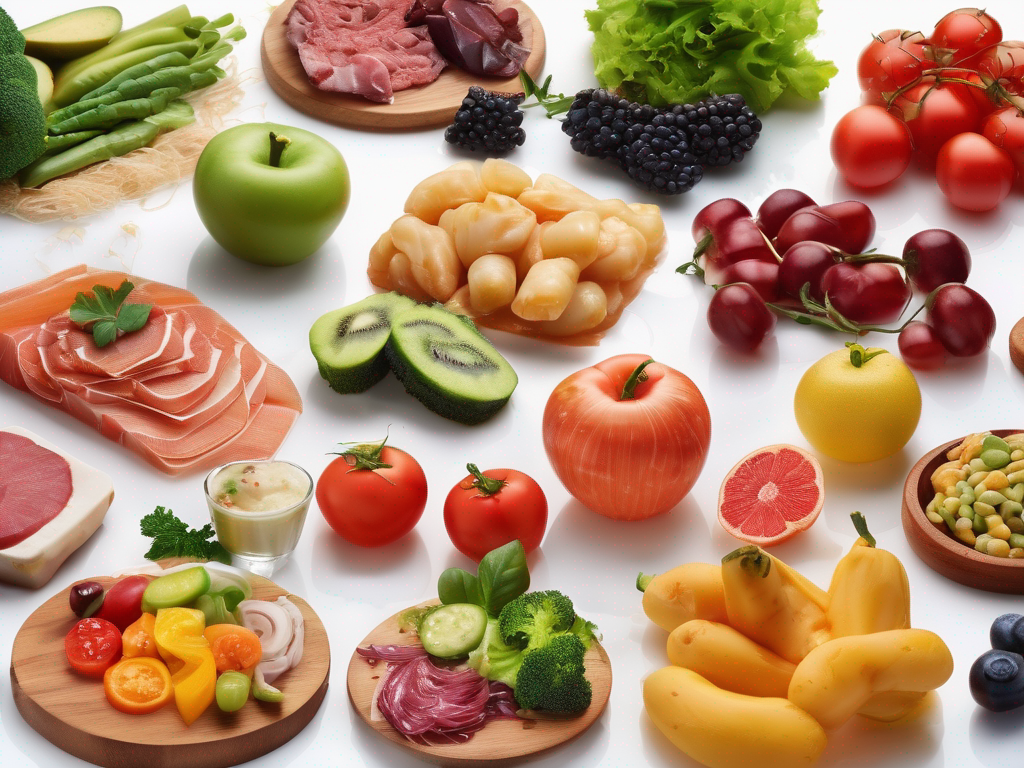
The Ultimate Guide to Food Storage in the Fridge
Get Your Free Food Safety Cheat Sheet
30 most common foods with instant answers. Print it and stick it on your fridge—completely free!
The Ultimate Guide to Food Storage in the Fridge
In our busy lives, the refrigerator plays a crucial role in keeping our food fresh and safe to eat. However, not all of us are aware of the best practices for storing food in the fridge to maintain its quality and safety. In this comprehensive guide, we will delve into the dos and don'ts of food storage in the fridge to help you make the most out of your refrigerator space while ensuring the safety of your food.
Importance of Proper Food Storage in the Fridge
Proper food storage in the fridge is essential for several reasons:
1. Food Safety
Storing food at the correct temperature in the fridge helps prevent the growth of harmful bacteria, reducing the risk of foodborne illnesses.
2. Food Quality
Maintaining the freshness of food in the fridge helps retain its flavor, texture, and nutritional value, ensuring you get the most out of your groceries.
3. Minimizing Food Waste
By storing food properly in the fridge, you can extend its shelf life and reduce food waste, saving money and resources in the long run.
Best Practices for Food Storage in the Fridge
1. Refrigerator Temperature
- Keep your fridge temperature at or below 40°F (4°C) to slow down the growth of bacteria.
- Use a refrigerator thermometer to monitor the temperature regularly.
2. Storage Zones in the Fridge
- Store raw meat, poultry, and seafood on the bottom shelf to prevent their juices from dripping onto other foods.
- Place dairy products and eggs on the middle shelves where the temperature is most consistent.
- Store fruits and vegetables in the crisper drawer, adjusting the humidity settings accordingly.
3. Food Packaging
- Store leftovers in airtight containers or resealable bags to maintain freshness and prevent odors from spreading.
- Use clear containers or label items with the date to track their freshness and avoid food spoilage.
4. FIFO Method (First In, First Out)
- Practice the FIFO method by placing newer items at the back of the fridge and older items at the front to ensure you use up perishable foods before they expire.
5. Cleaning and Organization
- Regularly clean and sanitize your fridge to prevent cross-contamination and foodborne illnesses.
- Keep your fridge organized with designated areas for different food categories to easily locate items and avoid overcrowding.
Foods That Should Not Be Stored in the Fridge
While the fridge is a great tool for preserving food, some items are best kept outside:
1. Potatoes
Storing potatoes in the fridge can cause their starches to convert into sugars, affecting their taste and texture.
2. Tomatoes
Tomatoes can lose their flavor and become mushy when stored in the fridge. Keep them at room temperature instead.
3. Onions
Onions absorb moisture in the fridge, leading to mold growth. Store them in a cool, dry place with good ventilation.
4. Bread
Storing bread in the fridge can make it go stale faster. Keep bread at room temperature or freeze it for longer storage.
Conclusion
Proper food storage in the fridge is essential for maintaining food safety, quality, and freshness. By following the best practices outlined in this guide, you can make the most out of your fridge space while ensuring that your food stays safe to eat. Remember to regularly clean and organize your fridge, monitor the temperature, and store items in the appropriate zones to maximize the shelf life of your groceries. With these tips, you can enjoy fresh and delicious meals while minimizing food waste.
Authoritative Food Safety References
These agencies and university labs inform every tip and health precaution we publish.
USDA FoodKeeper – Cold Storage Guidelines
Official refrigerator, freezer, and pantry timelines maintained by the U.S. Department of Agriculture.
Visit USDA FoodKeeperFDA Produce Safety Rule & Grower Guidance
Field-to-fridge handling practices that prevent contamination of fruits, vegetables, and leafy greens.
Visit FDA Produce SafetyCDC Foodborne Illness Prevention Hub
Surveillance-backed guidance on pathogens, symptoms, and steps to reduce foodborne illness risk.
Visit CDC Food SafetyUC Davis Postharvest Technology Center
University research detailing optimal storage atmospheres for produce after harvest.
Visit UC Davis PostharvestPenn State Extension – Home Food Preservation & Safety
Peer-reviewed extension bulletins on safe canning, chilling, and reheating practices.
Visit Penn State ExtensionGet Your Free Food Safety Cheat Sheet
30 most common foods with instant answers. Print it and stick it on your fridge—completely free! Want more? Upgrade to the complete guide with 70+ foods.
Scan your food directly and get instant safety info using our AI-powered camera feature.